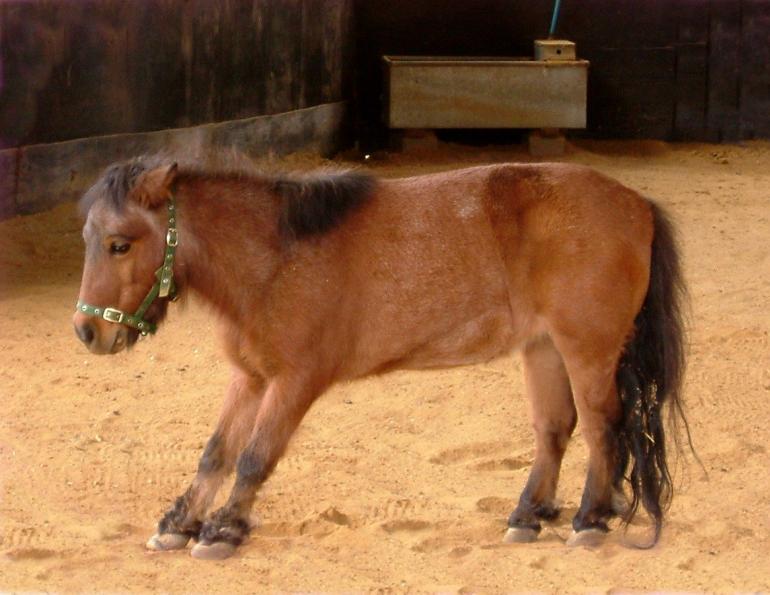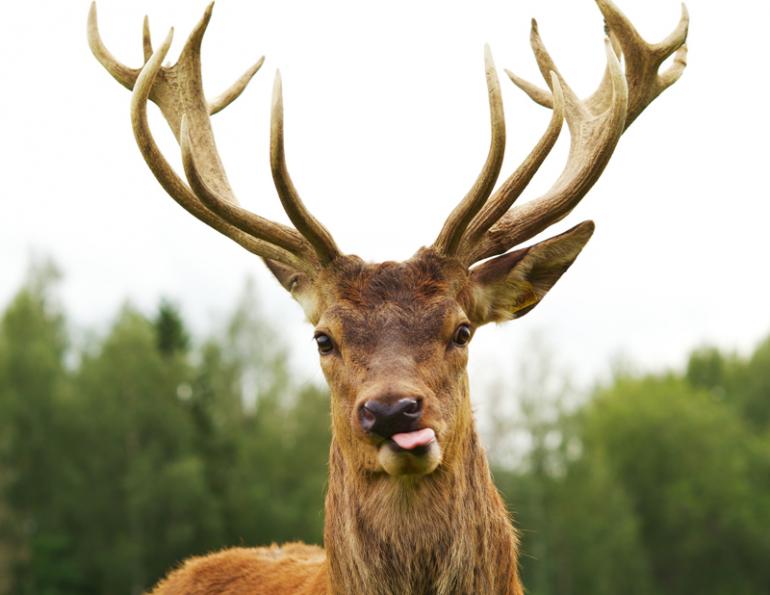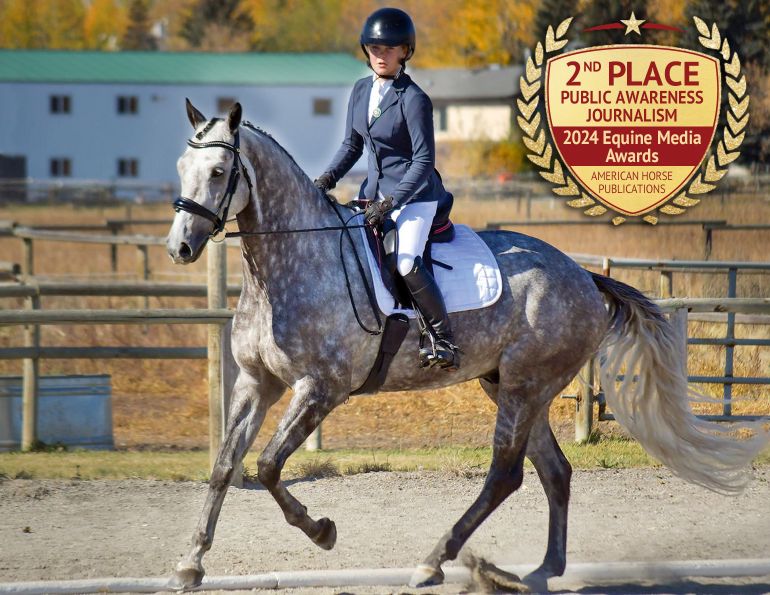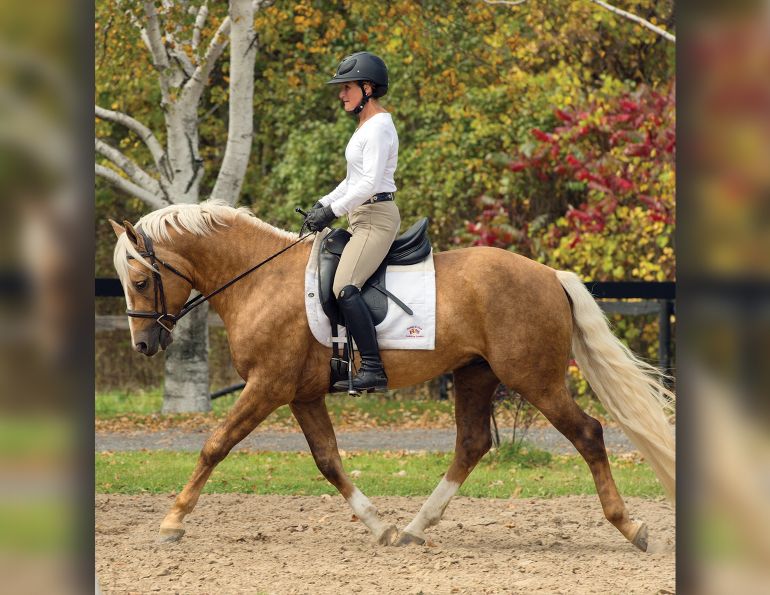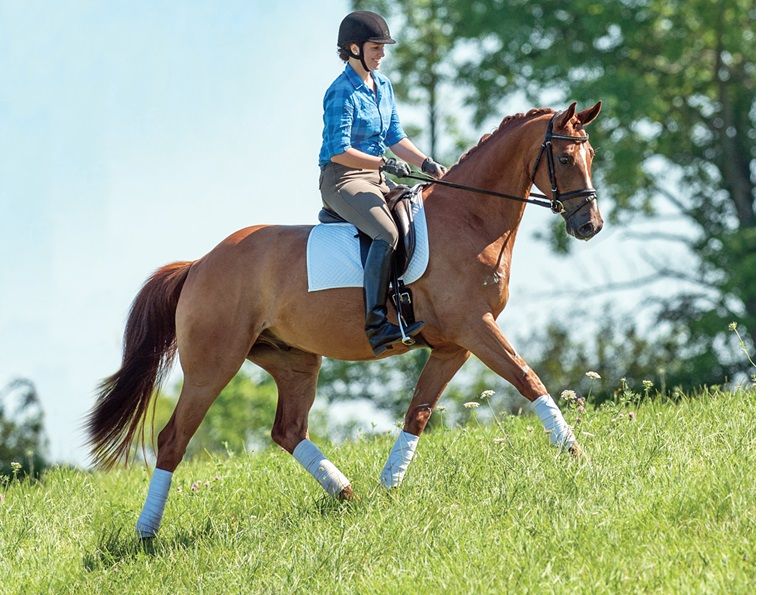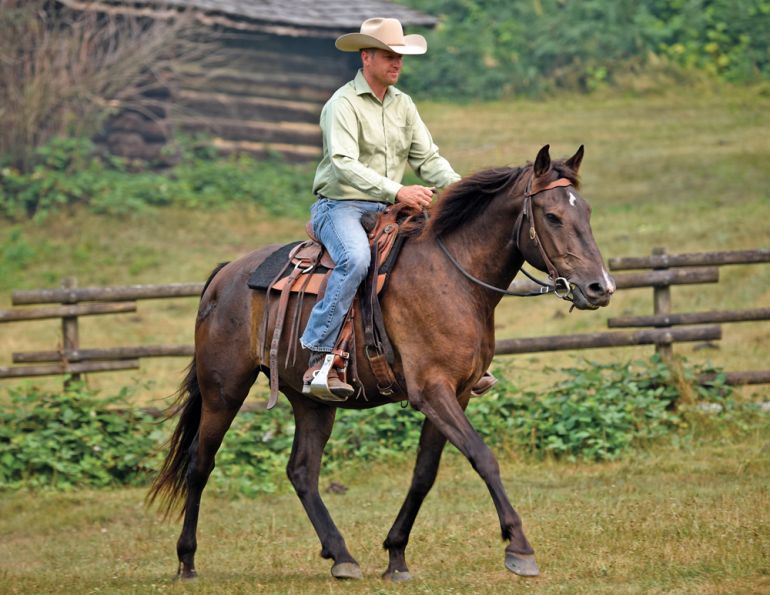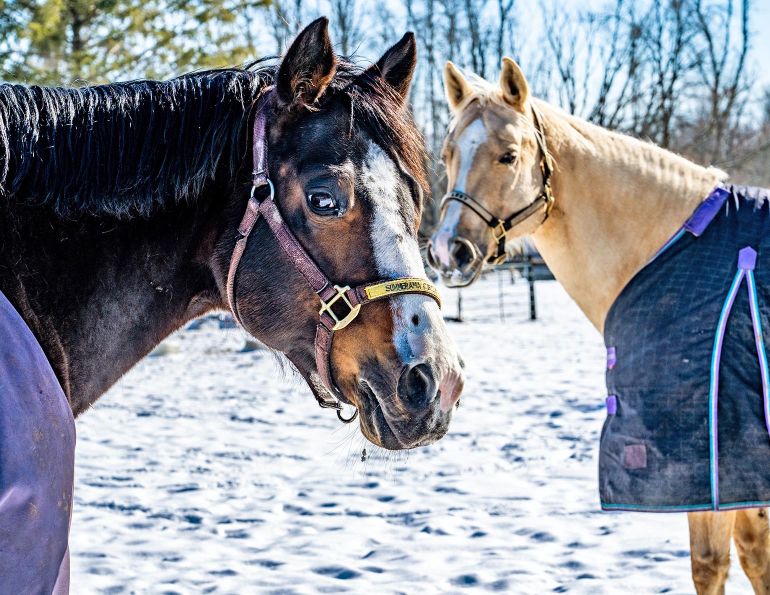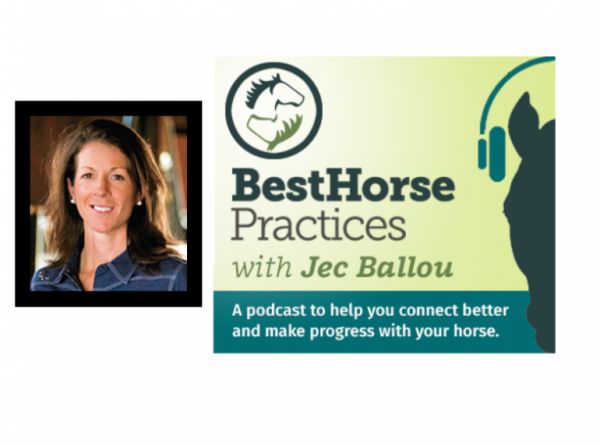By Tania Millen, BSc, MJ
Contrary to what the name may imply, Pony Club isn’t just for little kids on ponies. Pony Club is an international volunteer-based organization that originated in Britain and came to Canada in the 1930s. The Canadian Pony Club alumni Wall of Fame reads like a “who’s who” of Canadian equestrians: Ian Millar, Beth Underhill, Chelan Kozak, Christilot Boylen, Dana Cooke, Danny Foster, Gina Smith, Jim Henry, Jimmy Elder, Joni Lynn Peters, Karen Brain, Leslie Reid, Liz Ashton, Lorraine Stubbs, Lynn Larsen, Rebecca Howard, Rob Stevenson, Sandra Donnelly, Tik Maynard, and many more. Some of those alumni still compete at top level; some no longer ride. But they all struggled through a series of written, stable management, and riding tests, then put those skills and knowledge to use to become some of Canada’s best riders.
“From a very young age, Pony Club impressed on me the importance of properly caring for an animal — down to the nitty gritty details,” says Jill Irving, who won a team gold medal for Canada at the 2019 Pan American Games and was a travelling reserve for Canada’s Tokyo 2020 Olympic dressage team. “It was ingrained in us that there’s as much to looking after horses as there is to riding. They’re not machines, they’re animals and they have feelings. They have good days and bad days.”
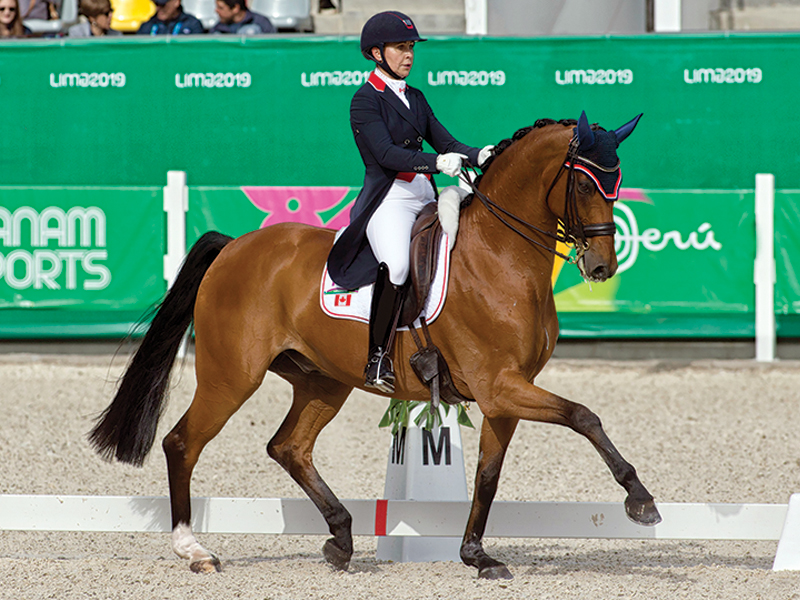
Jill Irving, riding Degas 12, was a member of the gold medal-winning Canadian Dressage Team at the 2019 Pan American Games in Lima, Peru. Photo: ©Cealy Tetley
Irving became a member of the Sudbury Pony Club in Ontario after her father brought home a pony, which they kept in their backyard.
“I was about six years old and we didn’t have a clue what we were doing,” she says. Irving and her sister started attending Pony Club at the local riding school to learn how to care for their new pony.
About 40 years ago, large cities and small towns had different qualities of horses and coaches, but because Pony Club was standardized, Irving says, “It was one system that we all followed. In my day, Pony Club was available in very small communities. It didn’t matter whether you were from Sudbury, Toronto, Vancouver, Lethbridge, or any small town.
“For a young kid coming from a smaller community, it was wonderful,” says Irving. “It prepared us for the big leagues. It gave me a great horsemanship foundation which emphasized the importance of horse care, plus instilled values of hard work, volunteerism, and giving back.”
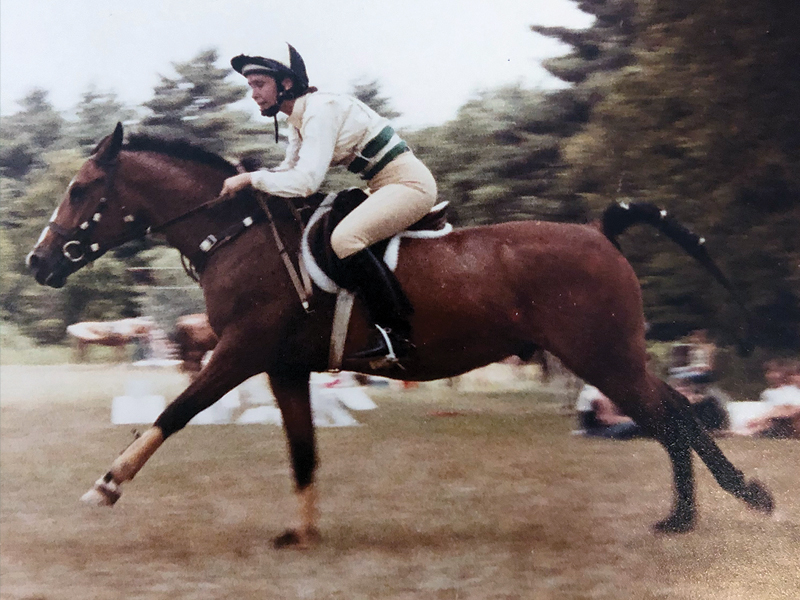
Jill Irving was about six years old when she became a member of the Sudbury Pony Club. She is pictured during her Pony Club years competing at a Pony Club C level rally (above), and a Preliminary 3-Day-Event (below). Photos: Jill Irving Collection
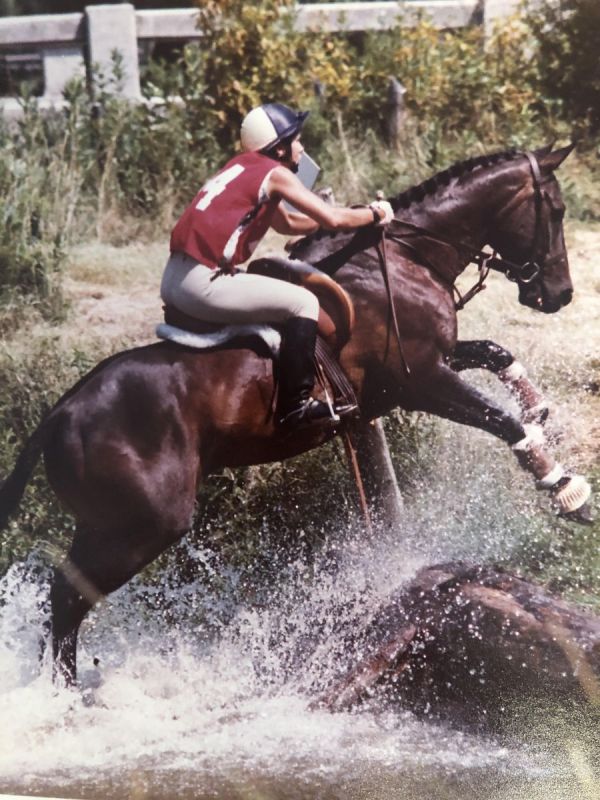
Pony Club started in Great Britain in 1929 and came to Canada in 1934. The first Canadian branch was started by the Eglinton Hunt Club in Toronto, Ontario. Today there are about 180 local branches in British Columbia, Alberta, Saskatchewan, Manitoba, Ontario, New Brunswick, Prince Edward Island, and Nova Scotia. Each branch is run by volunteers — parents, grandparents, or former Pony Clubbers.
“One of Pony Club’s core values is education,” says Brad Holub, who volunteers as the National Chair for Canadian Pony Club. “We establish an incredible foundation of horsemanship for Pony Clubbers to work from and have very high standards and expectations around caring for horses and how members conduct themselves.”
Exceptional horse care and everyday hard work are attributes that Brian Morton says have helped him get to where he is today. He’s the resident rider at Spruce Meadows in Calgary, Alberta and credits Pony Club for giving him a solid start in the horse industry.
“Working with horses was a childhood dream,” says Brian Morton, who has jumped for Canada on three senior Nations’ Cup teams.
“I started riding when I was six and shortly thereafter, it was pretty clear that this was going to be the major thing in my life. Riding was the only career I ever seriously considered. Pony Club was a big part of my education to be ready to do that and do it well.”
Like Irving, Morton started Pony Club at age six or seven. He was a member of Vancouver Pony Club and completed all the levels, passing “A” level at age 19. After graduating from Pony Club in his late teens, Morton started to specialize in show jumping. Following ten years of operating a training and teaching business with Mark Laskin, plus another four years on his own, Morton got the job developing and competing Spruce Meadows’ horses.
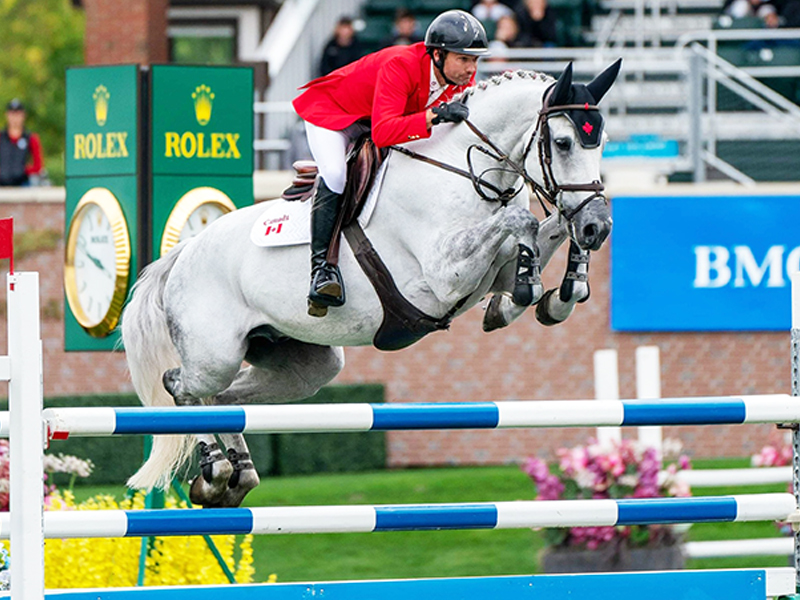
Former Pony Clubber Brian Morton achieved his childhood dream of working with horses. He is now the resident rider at Spruce Meadows in Calgary, Alberta. Photos: above (Rylee Smolarchuk); below (Kim Gaudrey)
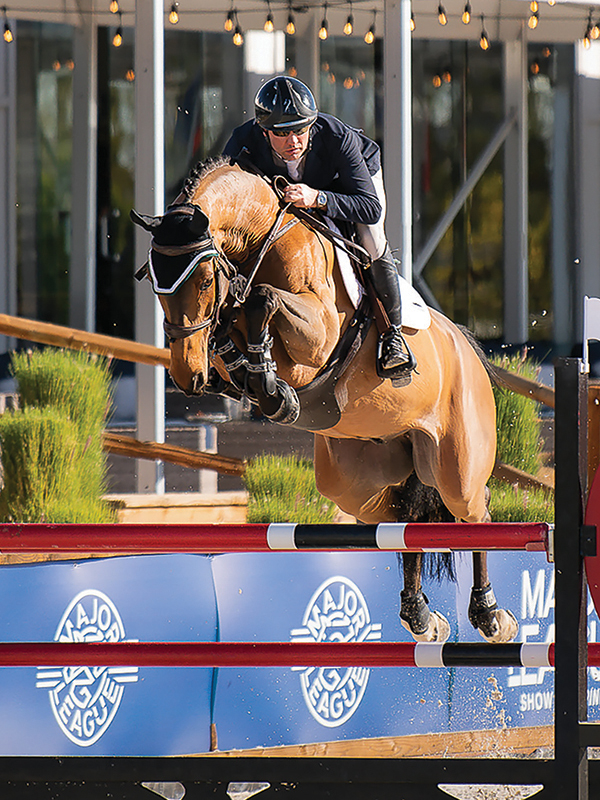
“There are about 60 horses,” says Morton. “I ride between five and ten horses a day. Plus, I have a hand in the breeding program, help develop young horses, and do a little bit of teaching.
“Pony Club gave me a really good education in conformation, soundness, nutrition, veterinary care, lunging, horse care — the stable management side of things,” says Morton. “I recognized what an asset [a Pony Club education] was going to be for my future in the horse industry.”
Almost 20 years later, he still draws on that knowledge.
“When vets start talking about the anatomy of the lower leg and they’re not slowing down to put it in layman’s terms — they’re giving you the full scientific explanation — I understand that,” says Morton. “That’s a direct result of my Pony Club education.”
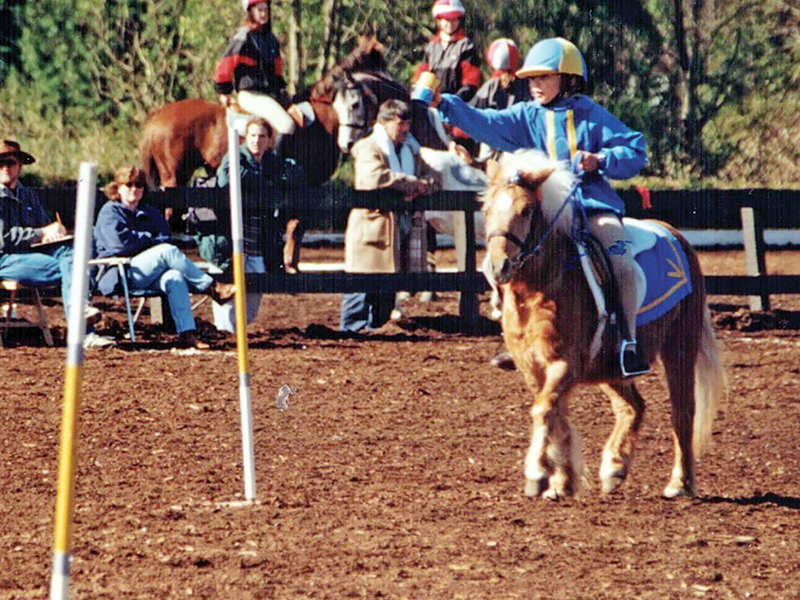
Brian Morton competing in Prince Philip Games during his Pony Club years. Photo: Brian Morton Collection
Although Irving couldn’t complete the riding portion of her “A” test due to a lame horse, she has similar reflections.
“I learned to provide a very high standard of care for horses at a very young age and I think my standards today are very high,” she says. “I’ve seen other riders that haven’t been through Pony Club and I think some of them are lacking in that way.”
Karl Slezak had a slightly different Pony Club journey from Irving and Morton, but also continues to use knowledge gained from his years in the organization. Slezak just returned from riding on Canada’s Three-Day Eventing team at the 2022 World Championships in Italy, 25 years after he started eventing in southern Ontario at age 15. He became a member of Albion Pony Club in Ontario at age 16 and zoomed up the levels to complete his “A” test.
Related: Should You Let a Novice Ride Your Horse?
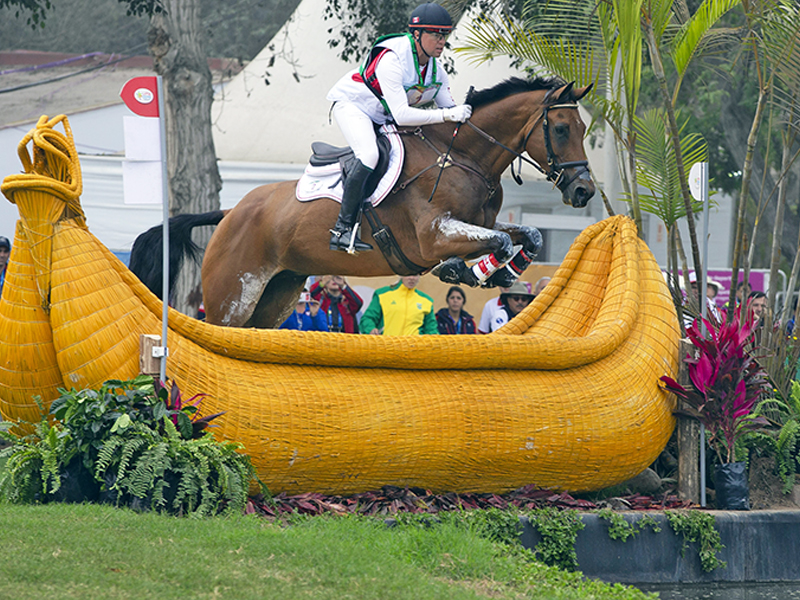
Karl Slezak, riding Fernhill Wishes, was a member of the bronze medal-winning Canadian Eventing Team at the 2019 Pan American Games. Photo: ©Cealy Tetley
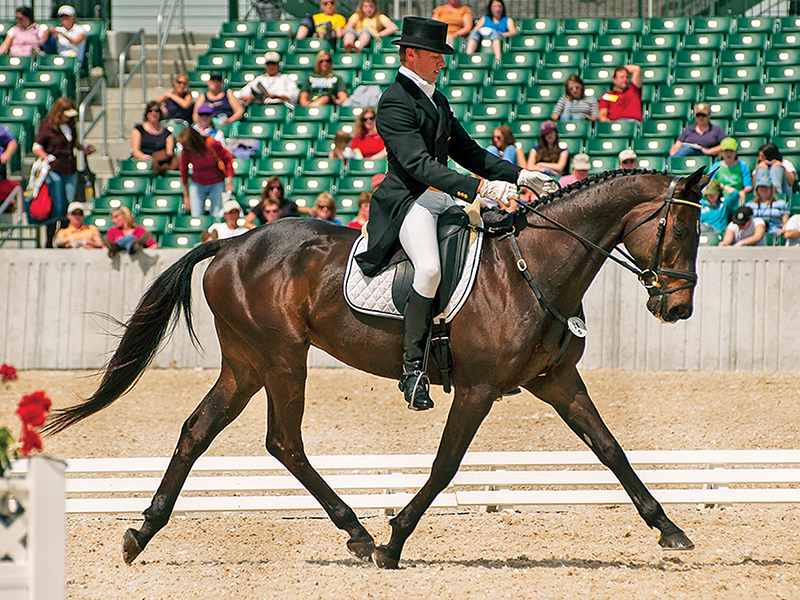
Karl Slezak competing on Kachemak Bay in the dressage phase of the 2009 Rolex Kentucky CCI4* (above), and on Watson’s Shelbreen in indoor eventing at the Toronto’s Royal Agricultural Winter Fair 2009 (below). Photos: Michelle Dunn
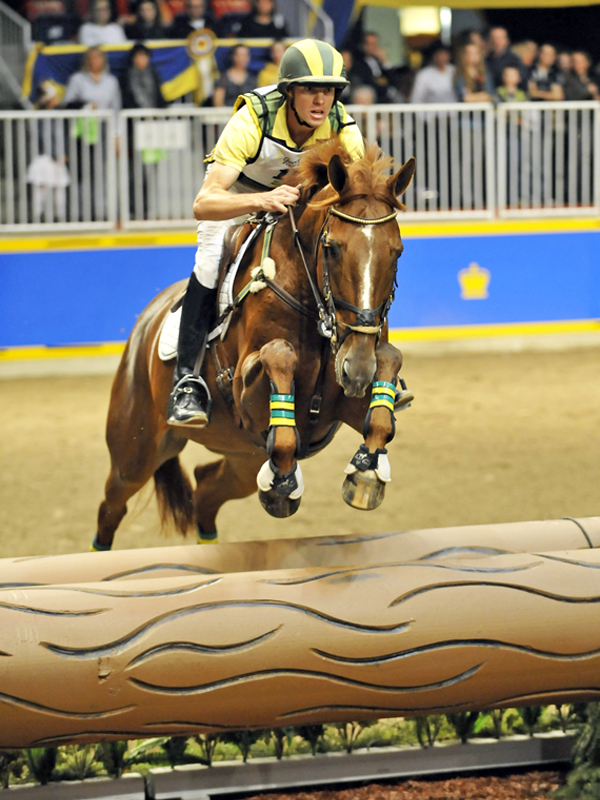
“The knowledge and attention to detail [that Pony Club provided] has made it easier to manage horses at the upper levels of three-day eventing,” says Slezak. “It helps us keep the horses sound and competing.”
But all three riders say there’s more to Pony Club than horse-y education.
“There’s a lot of traveling you can do with Pony Club that I think is great for exposure,” says Slezak.
“We did a lot of really fun things as a group,” says Irving. “We went to the Mohawk Rally [similar to today’s horse trials], which was outside of Toronto at the Mohawk Raceway. It was a really big deal. I remember meeting kids from all over Ontario when I was 12 or 13 years old. It was my window into travel and meeting other kids that did what I did. It was eye-opening.”
“Pony Club encouraged me to have a broader view,” Morton says. “I didn’t become discipline-focused in the early stages of my career and I think that set me up for success.”
He explains, “I met a lot of people through Pony Club — dressage riders, three-day riders, show jumpers, people in the hunter industry. I think that was useful for my connection base.”
Irving says camaraderie was a big part of Pony Club, too. “I’m still really good friends with some of the people I grew up with in Pony Club and we have a good laugh about some of the antics we got up to.”
With all these benefits, it’s surprising there aren’t more Pony Club members today. Although there are Pony Clubs in over 20 countries, Canada’s club is struggling to attract members.
“We have about 2,000 members right now,” says Holub. “But that’s down from about 6,000 members ten years ago. So, we’re really looking to grow the membership and update the organization to become more relevant going forward.”
Canadian Pony Club is hoping to reconnect with former members who are still in the industry to help bring the organization forward.
“It’s an old organization that hasn’t evolved as quickly as the horse industry has changed,” Holub says. “But we have a lot of volunteers who volunteer with Pony Club for life.”
“Nothing happened in Pony Club unless everyone volunteered,” says Irving. “That was a life lesson for me.”
Related: Eagle Feather Riding
It’s a lesson that stuck. Today, Irving provides opportunities for young, up-and-coming Canadian riders to travel to Florida and meet international riders, watch lessons and shows, and attend non-riding clinics through the Jill Irving Youth Equine Mentor Program.
“I believe the opportunities that Sudbury Pony Club gave me took me out of my little hometown and opened my eyes,” says Irving. “I started the program because I feel that high-performance riders need to give back. That goes back to Pony Club and volunteering and giving kids opportunities. That’s where I come from. That’s my culture. It comes full circle.”
Canada’s high-performance riders have followed many different paths to achieve excellence in their various sports. But methodically gaining knowledge and skills through the Pony Club system seems to be a common denominator.
“Pony Club is a great high school-level education,” says Morton. “You become versatile, well educated, and set up for success. The traits that you have to develop to be able to pass those tests — being studious, determined, patient, and having a cool head and being able to multi-task — those are great skills for any field. Later on, you can go and learn tradecraft and more specific things about a particular equine discipline, but that general education is going to set you up to be a good horse person, no matter what you want to do.”
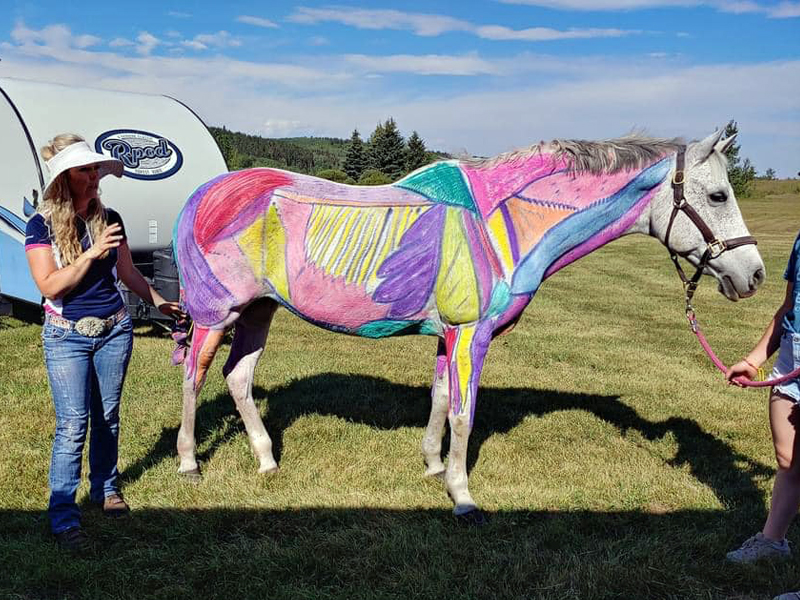
Members of Alberta’s De Winton Pony Club learning about bandaging and equine anatomy (above/below). Photos courtesy of De Winton Pony Club
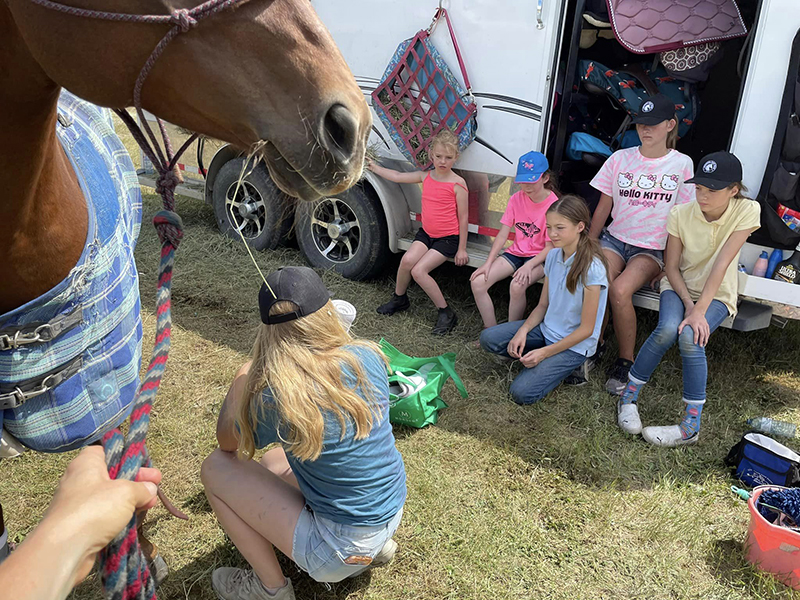
Loyalty, Character, Sportsmanship
Pony Club is one of the few affordable ways that horse-crazy kids of non-horsey parents can enter an increasingly expensive sport that can be difficult for outsiders to navigate. Pony Club’s motto is Loyalty, Character, Sportsmanship and the volunteer organization aims to develop strong riders; safe, knowledgeable equestrians; and upstanding citizens. As society becomes distanced from horses, Pony Club promotes a culture of long-term effort and hard work, both of which are necessary to achieve success in the horse world.
There are almost 180 Pony Club branches (individual clubs) in eight Canadian provinces. Children, youth and young adults aged five through 25 can participate. Those age 21 and up can participate in the Horse Masters program. Branches are run by volunteer parents, grandparents and former Pony Clubbers.
Pony Club branches may offer riding lessons, stable management lessons (practical and theory), Prince Philip Cup Games (team gymkhanas), tetrathlon (ride, run, swim, shoot), quiz (non-mounted theory and practical competitions), rally (a three-day event), and show jumping, and dressage competitions. Exceptional pony clubbers can apply for international teams to compete against other countries in these events, too.
Members can also choose to test their knowledge against national standards from “D” level (the lowest) to “A” (the highest). There are both stable management and riding streams so that members can test at higher levels without exceptional riding skills. The organization is run by volunteers and teen members often teach younger children.
Pony Club standards are recognized worldwide and achieving the full “A” level is a significant accomplishment. It requires in-depth equine knowledge, practical stable management skills for managing a professional barn, ability to teach lessons and lunge young horses, plus dressage and 1.2-metre show jumping skills.
Pony Club graduates are known to be knowledgeable and competent equestrians and are in demand as riders, trainers, coaches, grooms, and stable managers worldwide. Many have developed careers in the international horse industry, working and riding at the top levels of horse sport.
Pony Club members at the 2022 National Rally held at Clearwater County, Alberta’s Prentice Creek Equestrian Centre.
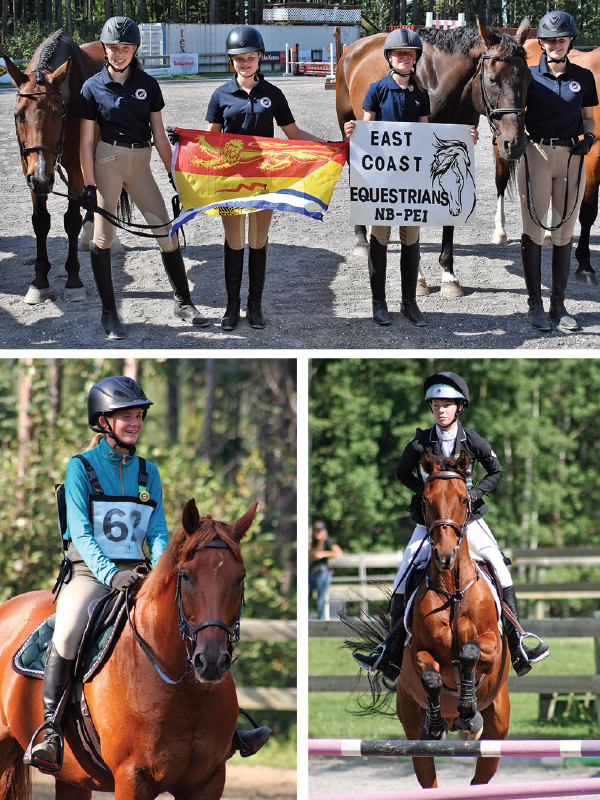
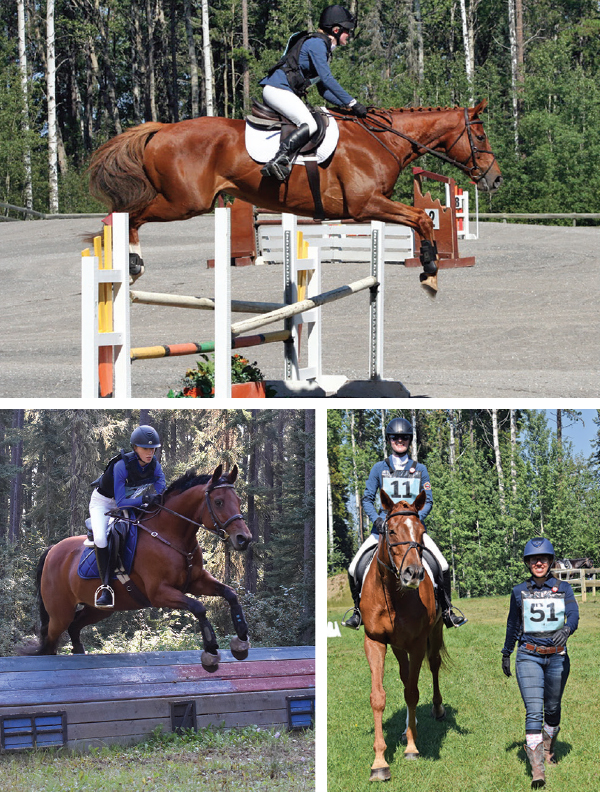

Photos courtesy of Kelly Brouwer
To learn more:
Related: 4-H Canada - Learn to do by doing
Related: Teaching Children to Ride
Main photo: Alberta North Pony Club members at the 2022 National Rally. Photo courtesy of Kelly Brouwer




